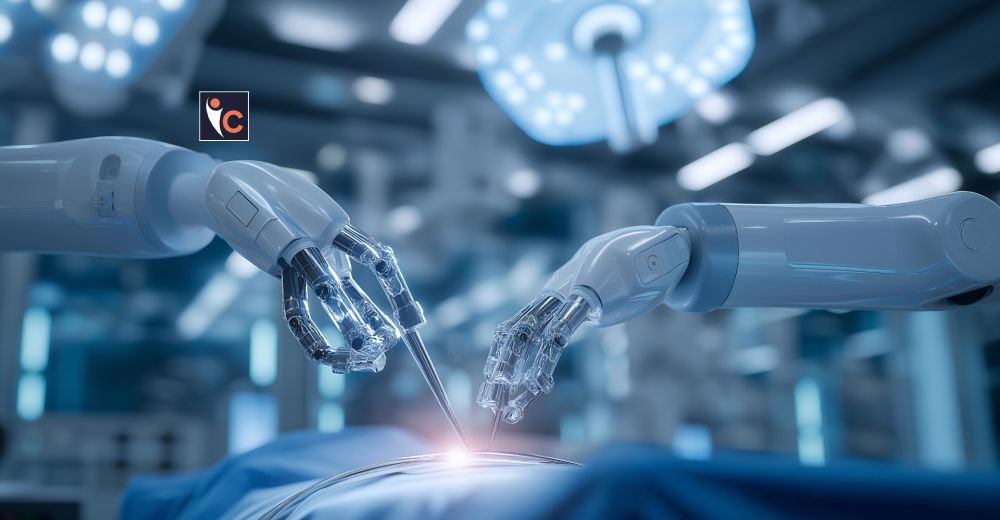Surgical Innovation
Surgical innovation through robotic surgery is one of the most transformative advances in modern healthcare. Human precision and machine accuracy have made robotic surgery disrupt the complex procedure and provide more accuracy, safety, and speed to the surgeon and the patient by involving human skill and machine precision. Robotic Surgery Centers now bridge healthcare and engineering, setting a new standard for excellence in modern surgery.
This article looks at the technology behind robotic surgery centers, key innovations in the field, the significant effects it has on patient outcomes and the future of surgery.
A Revolution in Surgical Techniques
Robotic-assisted surgery enhances a surgeon’s ability rather than replacing it. Surgeons use robotic arms controlled through a console to perform minimally invasive procedures with exceptional accuracy. As an illustration, in heart surgery, robotic systems have recently enabled surgeons to fix valves using small slits that previously could not be achieved with the conventional open-heart procedures.
This precision allows surgery through tiny cuts, reducing tissue damage, bleeding, and recovery time. Patients experience smaller scars, shorter hospital stays, and faster returns to normal life. For example, in heart surgery, robotic systems now let surgeons repair valves through small openings that were once impossible with traditional open-heart methods.
Originally used in fields such as urology and gynecology, robotic systems are now widely applied in orthopedics, gastrointestinal, and cardiac surgery. Hospitals across the world continue adopting these systems to improve outcomes.
Key Innovations in Surgical Robotics
-
Micro Robotic Systems:
Engineers have developed small-sized robots that can fit in normal operating theaters without special arrangements. Robotic surgery is now more practical and cost-effective with these smaller, reusable and sterilizable systems. Research has established that patients receiving the procedure using these systems normally heal more quickly and take up to half the time in hospital than those receiving standard open surgery.
-
Image-Guided Surgery:
Modern imaging tools now help surgeons plan and perform procedures with greater precision. Detailed 3D images from pre-surgery scans map the surgical area, guiding exact incisions and implant placement. In orthopedic surgeries, these tools help position implants accurately, lowering the chance of misalignment.
In organ transplants and vascular operations, surgeons use real-time 3D overlays that show internal structures more clearly, improving control during delicate tasks. Combining robotic precision with enhanced visualization has created a new level of accuracy and safety in surgery.
-
Ergonomics and Efficiency:
Robotics has also transformed the work of surgeons. The surgeons are working on an ergonomic console, which means that they can move the instruments with ease, and this can help them minimize fatigue. This design is useful in keeping the focus as well as the performance constant during surgery.
These systems also make operating rooms more efficient. Studies show robotic surgery can cut operating time by up to 25% and reduce surgical complications by about 30%. Hospitals benefit from lower costs, better outcomes, and the ability to treat more patients with existing staff and facilities.
Implications for the Patients and Healthcare
Robotic surgery has definite benefits to the patients; quicker recovery, reduced pain, reduced scar, and diminished chances of being infected. Hospitals also benefit through shorter patient stays, fewer readmissions, and improved resource use. Together, these results create a more efficient healthcare system.
This technology has made Robotic Surgery Centers of excellence and education, as it keeps growing. They hire the best surgeons, promote cross-disciplinary studies and educate the future generation.
Leading Robotic Systems Shaping the Field
The Da Vinci surgical system has been the world leader in robotic surgery, and it is constantly being advanced to improve control, comfort and accessibility. Its newest version, da Vinci 5, improves movement precision and usability for hospitals of all sizes. In parallel, innovation is growing worldwide.
Future Directions and Challenges
Next-generation robotic systems are becoming smarter and more adaptive. Researchers are coming up with robots that modify the movements in real time to the anatomy of a patient and carry out some chosen actions under the supervision of a human. Such developments will also enhance the accuracy of the surgery and help the surgeons in the complicated operations.
However, challenges remain. The small hospitals may find it difficult to adapt due to high costs, constant maintenance, and specialized training required. Clear guidelines and oversight are also required on ethical and safety issues. Further cooperation between the doctors, engineers, and policymakers is aiding in dealing with these issues and maintaining the safe and equitable use of the technology.
Conclusion
The rise of Robotic Surgery Centers marks one of the greatest milestones in modern medicine. The combination of robotic accuracy and human dexterity gives the surgeons the ability to complete complicated tasks and achieve faster recovery rates with a reduced number of complications.
With the continued reduction in size and diversity in the systems, as well as in their ease of use, they will continue to move into new disciplines in surgery. The future of surgical care lies not just in advanced machines, but in how they empower surgeons to operate with greater precision, care, and confidence reshaping the future of medicine one movement at a time.





